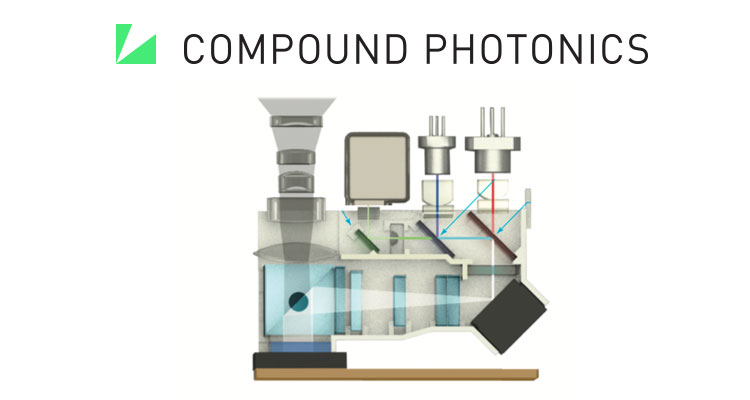Compound Photonics Likely Freaked Out Texas Instruments’ DLP Team Yesterday With 14mm 4K Resolution Chip Launch
 At Display Summit China, Compound Photonics introduced what it’s calling the world’s smallest native 4K imaging device, measuring only 14 millimeters diagonally and featuring pixels smaller than three microns. Compound Photonics is an eight-year old technology company whose engineering and marketing teams are comprised of some of the brightest stars in the photonics and projection industries.
At Display Summit China, Compound Photonics introduced what it’s calling the world’s smallest native 4K imaging device, measuring only 14 millimeters diagonally and featuring pixels smaller than three microns. Compound Photonics is an eight-year old technology company whose engineering and marketing teams are comprised of some of the brightest stars in the photonics and projection industries.
Hidden at the bottom of their press announcement was the contact information for Pierre Richer — former NEC Display president and CEO! So, this is the REAL DEAL!
“Compound Photonics is the biggest and most capable photonics and projector manufacturer that you have most likely never heard of,” declared Tim Anderson, the company’s vice president of product management in his Display Summit presentation. “We are the company that has succeeded in introducing the world to RGB solid state laser based technology, making it finally possible to manufacture a 3,000 lumen lamp-less native 4K projector that rivals the performance delivered by today’s solid state displays.”
So, what’s all this mean? Well, in case you aren’t reading between the lines, there’s a new projection company about to hit the market with a pure-laser projector, using a technology that the company claims is higher resolution AND smaller than DLP — the dominant projection technology, as far as quantity goes, in the market right now. So, this could be big.
Compound Photonics says that the use of RGB laser technology eliminates lamps, creates a huge new color gamut to work with, and enables balancing the color output of each color channel to achieve a perfect white point. And, Anderson claimed that Compound Photonics has invested significant engineering resources to reduce the cost of RGB lasers and speckle.
“Projector customers around the world want to be able to project a huge image in full daylight and still have an outstanding image,” Anderson said. “Our engineers have developed specific algorithms that use an expanded color gamut made possible by RGB laser technology. These algorithms combat ambient light and dramatically improve color contrast.”
Anderson said that Compound Photonics offered capabilities ranging from tiny, bright, full HD laser light engines for mobile devices, an embedded 1080P projector that is less than two cubic centimeters in size, IR and Green lasers, head-up car displays, near-eye augmented reality, and gesture recognition. “We are a team of over 300 scientists, technologists, software engineers, and marketers that are committed to changing the way consumers interact with technology. Our corporate directory is a veritable ‘who’s who’ of technology and includes veterans of IBM, InFocus, Epson, NEC, Philips, Pixelworks and Microsoft,” he said.
Compound Photonics’ primary manufacturing and design centers are located in Phoenix, Arizona and Newton Aycliffe in the United Kingdom. The company also has offices in Vancouver, Washington; Redmond, Washington; Madison, Wisconsin; and Chicago, Illinois. The company was founded in 2008.
Here’s a link to exactly how the technology works.



